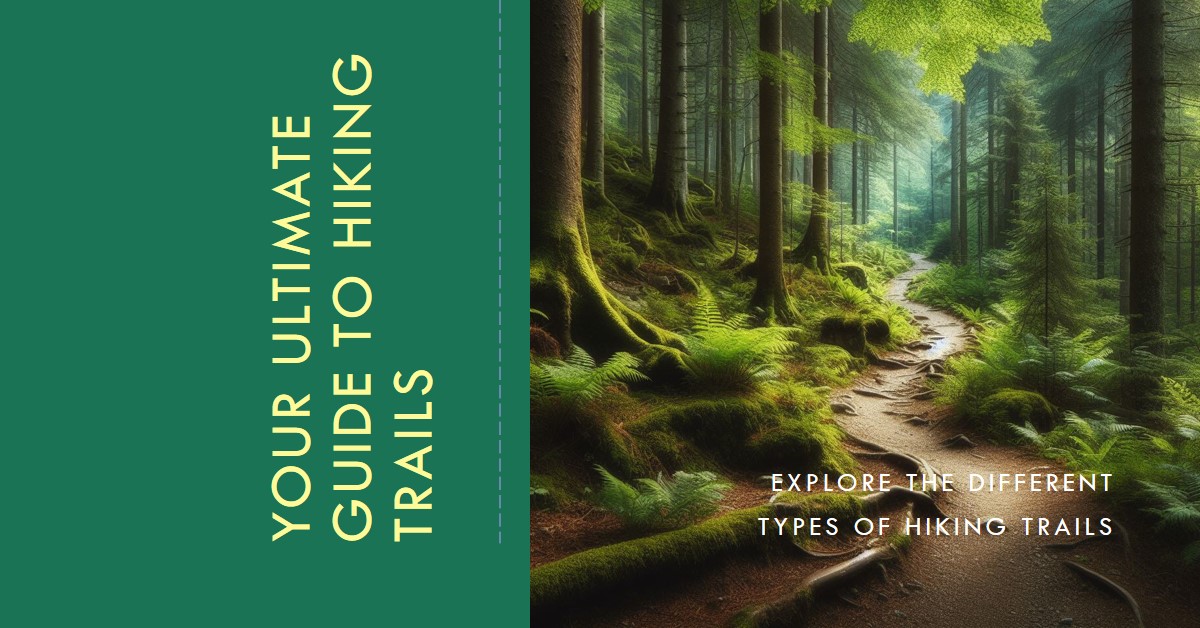In the world of outdoor adventures, one critical question often arises – is a sleeping pad required along with a sleeping bag? The clear answer is a resounding yes! A sleeping pad is essential, providing necessary insulation and padding, enhancing warmth, and improving overall comfort during your camping or outdoor sleeping experience.
While a sleeping bag offers significant warmth, it lacks the requisite padding necessary for comfort, making direct ground sleeping rather uncomfortable. Not only is comfort in play here, but so too is the ability to insulate appropriately, preventing the chilly ground from sapping away your body heat. This is where a sleeping pad comes into the picture, offering invaluable benefits like insulation, comfort, protection, and maintaining the integrity of your sleeping bag.
Table of Contents
Exploring the Benefits of a Sleeping Pad
| Boosted insulation and warmth: | An effective sleeping pad drastically enhances insulation by preventing body heat loss to the ground, leading to a warm and comfy sleep during frosty nights. Pads with a higher R-value ensure superior insulation. |
| Heightened comfort and support: | Sleeping pads cushion you from the hard, rocky ground, giving you a more comfortable sleep. These pads can relieve pressure points, offer better spinal alignment, and minimize discomfort caused by sleeping on uneven surfaces. |
| Protection from rough and damp surfaces: | A sleeping pad acts as a shield between you and the ground, safeguarding your sleeping bag from punctures, wear and tear, and moisture. This ensures a clean and dry sleeping environment, even in damp or rocky terrains. |
Choosing the Perfect Sleeping Pad – Factors to Consider
When contemplating the prospect of buying a sleeping pad, several factors should be considered. One of the most critical aspects is the type of sleeping pad that suits your needs the best. You have a plethora of options to choose from: air pads, foam pads, self-inflating pads, each with its unique advantages and disadvantages.
Other important factors include the thickness and R-value of the pad, which directly impact the comfort level and insulation provided by the pad. Additional considerations like weight and packability come into play, especially for backpackers who prefer gear that does not add much weight to their backpacks. Lastly, the durability and material of the sleeping pad are also critical, as a high-quality, durable pad will undoubtedly outlast rough terrains and conditions.
The Magnificent Duo – Sleeping Pads and Sleeping Bags
The tweening of a sleeping pad with a sleeping bag is a game-changer when it comes to insulation during camping trips. Although a sleeping bag offers a certain level of insulation on its own, it falls short in some areas. The minute you lay your sleeping bag directly on the ground, it is subject to compression, which tends to decrease its insulation properties.
Here, a sleeping pad comes to the rescue, supplementing the sleeping bag by serving as an extra layer of insulation between your bag and the cold ground. The pad reduces heat loss via conduction, preventing the cold ground from absorbing your body heat. This brilliant combination regulates temperature effectively and ensures a comfortable sleep.
Noteworthy Advantages of Using a Sleeping Pad
Despite whether you own a sleeping bag or not, a sleeping pad is a savvy investment for a comfortable camping experience. Packed with numerous benefits, a sleeping pad can greatly enhance the quality of sleep by providing a versatile solution for different types of sleeping situations, offering added comfort, ensuring robust insulation in cold weather, and protecting against the sometimes rough terrain of the great outdoors. Moreover, a sleeping pad allows you to adjust its firmness based on your personal comfort, ensuring the perfect level of support and a more restful sleep.
Potential Drawbacks of Using a Sleeping Pad
Every coin has two sides, and the same is true for sleeping pads. They come with their unique set of challenges. The first one is the additional weight and space they occupy in your backpack. High-end, lightweight, and durable sleeping pads can be more expensive, and you need to see if the benefit outweighs the cost. Another minor issue could be the potential noise that some sleeping pads may create while you move around in your sleep. While this might not bother everyone, light sleepers or those sharing a tent might find this somewhat disruptive.
Pondering Over the Pros and Cons of Solely Relying on a Sleeping Bag
While a sleeping bag alone may get you through warmer climates or shorter trips, its limitations are exposed in colder temperatures. As the rustic ground beneath your sleeping bag extracts the heat from your body, you may start to feel discomfort and cold. This is where the sleeping pad steps in, offering critical benefits that go beyond basic insulation.
A sleeping pad integrates seamlessly with your sleeping bag, providing additional comfort and insulation. It provides an extra layer of insulation between the bag and the ground, greatly enhancing the overall insulation of the sleeping system. It offers customizability in terms of firmness based on personal preference. Above all, it shields you from uneven surfaces and protects your sleeping bag, adding longevity to your camping gear.
In conclusion, if you often brave colder climates or undertake long camping trips, it is recommended to consider investing in a sleeping pad, taking your outdoor sleeping experience a notch higher!
When it comes to outdoor adventures and camping, the question often arises – “Do I need a sleeping pad if I have a sleeping bag?” The answer, quite emphatically, is yes! A sleeping pad, coupled with a sleeping bag, is a long-standing duo that ensures insulation, cushioning, and overall improved quality of sleep while you’re braving the wilderness.
Having a sleeping bag alone might provide you with warmth but lacks the necessary cushioning required to rest comfortably. A sleeping pad fits aptly in this position, not merely providing comfort but also a crucial insulation layer that keeps you from losing body heat to the frosty ground. The significance of a sleeping pad even extends to protecting your sleeping bag from punctures and dampness, thereby augmenting its overall lifespan.
Why Should You Opt for a Sleeping Pad?
| Superior insulation and warmth: | Sleeping pads enhance insulation by minimizing body heat loss to the freezing ground. Pads with higher R-values provide better insulation, ensuring pleasant sleep during the chilliest of nights. |
| Optimum comfort and cushioning: | Sleeping pads, acting as a buffer between you and the ground, guarantee a comfortable sleep. These pads relieve pressure points, offer excellent spinal alignment, and diminish the discomfort caused by uneven sleeping surfaces. |
| An extra layer of protection: | Sleeping pads also serve as a protective layer between you and the ground, safeguarding your sleeping bag from potential punctures, tears, and moisture, ensuring a clean and dry sleep surface. |
How to Choose an Ideal Sleeping Pad?
The necessity of a sleeping pad can’t be denied. With a multitude of options available in the market, ranging from air pads to self-inflating pads and foam pads, making the right choice often needs a bit of introspection regarding your specific needs and preferences.
You need to factor in the thickness and R-value of the sleeping pad, which determine the comfort level and insulation it provides. For frequent backpackers, a lightweight, easily packable sleeping pad would be perfect, causing minimal weight addition to the backpack. Furthermore, a sleeping pad’s durability and construction material are crucial too. High-quality, robust sleeping pads allow long-lasting usage even in the toughest terrains.
The Quintessential Pair: Sleeping Pads and Sleeping Bags
A sleeping system encapsulating both a sleeping bag and a sleeping pad significantly enhances insulation during camping or backpacking. A sleeping bag does offer a certain level of insulation independently but is restricted by limitations. Once a sleeping bag is laid directly on the ground, there ensues a compression that can reduce its insulation capacity. This is where the sleeping pad, acting as a complementary layer of insulation, comes in.
The sleeping pad aids in mitigating heat loss by conduction, thus prohibiting the cold ground from absorbing your precious body heat. Hence, by bolstering the overall insulation of your sleeping system and managing the temperature better, the duo of a sleeping pad and a sleeping bag ensures a snug, undisturbed sleep – exactly what you need while camping or backpacking!
Perks and Drawbacks of a Sleeping Pad
Investing in a sleeping pad could be a significant game-changer for your camping experience. From providing outright adaptability for various sleeping scenarios (be it on a tough, rocky surface or in a hammock) to ensuring proper insulation during cold weather, the advantages of owning a sleeping pad are multifold.
However, one significant issue with sleeping pads is the added weight and bulk they contribute to your backpack. Additionally, the cost might run on the higher end for superior quality, lightweight sleeping pads. Lastly, certain types of sleeping pads, particularly the inflatable ones, may generate noise with movement, potentially causing disturbances while sleeping.
The Pros and Cons of Exclusively Relying on a Sleeping Bag
While a sleeping bag alone may be sufficient for warmer climes or shorter camping trips, they have certain inherent limitations that become glaringly apparent in colder conditions. The cold ground can extract heat from your body, leading to discomfort and lower temperatures.
That’s where a sleeping pad swoops in for the rescue, offsetting these limitations by providing not just basic insulation but also additional comfort resulting from the cushioning effect. By integrating seamlessly with your sleeping bag, the duo ensures an excellent camping sleeping experience, regardless of the rugged terrains or the weather elements!
Contemplations On Sleeping Pads: Camping, Backpacking, and Traveling
When gearing up for a voyage into the wilderness, ensuring a balance between comfort and the weight you carry on your shoulders is imperative. A sleeping pad, while definitely elevating comfort, also adds extra weight to your load.
However, today’s market offers a variety of options providing the benefits of a sleeping pad without the burden of significant weight. Research around R-value requirements for different climates, and invest in a durable and easy-to-carry sleeping pad for your camping or backpacking adventure.
Cozy Interiors with Sleeping Pads
Another often overlooked yet practically significant use of sleeping pads is for indoor use or guest accommodation. A sleeping pad not only redefines comfort but also reduces noise, absorbs moisture, and adds an extra layer of cushioning. Whether to adjust firmness based on preference or store in hardly any space, a sleeping pad can always deliver.
Tackling Common Queries about Sleeping Pads
Do I Need A Sleeping Pad If I Have A Sleeping Bag?
Yes, a sleeping pad is essential even when you have a sleeping bag. The sleeping pad offers supplemental comfort and insulation, ensuring you don’t lose heat to the cold ground, abiding by the promise of a peaceful sleep.
Does A Sleeping Pad Enhance the Camping Experience?
A sleeping pad undeniably enhances your camping experience by providing the necessary insulation, absorbing moisture, and adding an extra layer of cushioning for unparalleled comfort while sleeping under the stars.
Could I Use A Sleeping Bag Without A Sleeping Pad?
Sure, you could, but you’d be sacrificing a degree of comfort and insulation. As outdoor enthusiasts would agree, investing in a sleeping pad, even with a sleeping bag on hand, can significantly improve your outdoor sleeping experience.
Amid the crackling bonfires, starlit skies, and the absolute thrill of outdoor adventures, uncomfortable sleep should be the last thing on your mind. And it brings us to the much-debated question, “Do I really need a sleeping pad if I already have a sleeping bag? Here’s your answer!
A sleeping bag, while essential in its place, cannot completely replace the utility of a sleeping pad. Just having a sleeping bag, while it may serve to keep you warm, might fail in providing the required cushioning a peaceful sleep demands. Here’s where a sleeping pad comes into play, ensuring insulation from the cool ground and making your sleeping time comfortable. Moreover, it shields your sleeping bag from potential punctures and dampness.
Decoding the Benefits of a Sleeping Pad
| Improved insulation and warmth: | A sleeping pad remarkably enhances your insulation, thereby preventing the loss of body heat to the cold ground. Look for pads with a higher R-value to ensure maximum insulation, thereby staying cozy even during freezing nights. |
| Added comfort and cushioning: | Sleeping pads act as a cushioned layer between you and the hard ground, ensuring a comfortable sleep. They significantly alleviate pressure points, ensure better alignment of the spine, and minimize discomfort brought by uneven grounds. |
| Shields you against rough and damp terrains: | A sleeping pad serves as a protective barrier between you and the ground, thereby saving your sleeping bag from potential tears, punctures, and moisture, ensuring a clean and dry sleeping surface. |
How to Choose the Right Sleeping Pad?
Recognizing the necessity of a sleeping pad is just the beginning. The market swarms with numerous variants, and choosing the right pad can often be overwhelming. Types like air pads, self-inflating pads, and foam pads, each come with their unique set of benefits and drawbacks, requiring careful consideration of your specific needs and preferences.
Several factors need consideration while choosing a sleeping pad. The thickness and R-value of the pad are pivotal, determining the level of comfort and insulation it provides. The weight and packability of the pad also matter, especially to backpackers who frequently wander into the wilderness. Further, the pad should be durable and made of superior quality material to withstand rough terrains.
Understanding the Bond between Sleeping Pads and Sleeping Bags
When camping or backpacking, the combination of a sleeping bag and sleeping pad acts as a vital duo, offering enhanced insulation. A sleeping bag surely provides insulation; however, it does have its limitations. Once directly laid on the ground, the sleeping bag can compress and lose its insulating properties. This is where a sleeping pad complements by providing an additional insulation layer, minimizing the loss of heat due to conduction. Thus, for temperature regulation and a more comfortable sleep, a combination of a sleeping bag and a sleeping pad is highly advisable, especially while camping in cold environments.
Pros and Cons to Consider
Opting for a sleeping pad over just having a sleeping bag brings numerous benefits, significantly improving your camping experience. However, using a sleeping pad might mean additional weight to your backpack. Not just this, the cost can be a factor to take into account, considering more durable and lightweight options tend to burn a hole in your pocket. And lastly, you might find the noise generated by certain types of pads, such as the inflatable ones, a bit disturbing while sleeping.
Weighing the Pros and Cons of solely relying on a Sleeping Bag
While a sleeping bag alone might be enough during warmer climates or for short-term camping trips, they offer limited use in colder conditions, with the ground robbing your body of heat. Here’s where a sleeping pad steps in to provide a helping hand. By providing an additional layer of insulation and cushioning, a sleeping pad offers a more comfortable sleep, despite the varying weather or rough terrains.
The Verdict: Sleeping Pads for Camping, Backpacking, and so much more
With the practical benefits a sleeping pad brings to the table, the additional comfort and convenience it provides cannot be overlooked. Right from more comfortable sleep while camping to added cushioning for painless backpacking adventures or even as a surprisingly helpful accessory for indoor use – a sleeping pad proves its utility in all.
Conclusion
In a nutshell, a sleeping pad comes as a highly recommended investment, regardless of whether you already have a sleeping bag or not. By offering paramount insulation and adding a comforting cushioning layer, a sleeping pad ensures you do not compromise your sleeping comfort at any cost. So, if you’re looking to satiate your wanderlust without losing your beauty sleep, investing in a quality sleeping pad would indeed be a wise move.
Ultimately, when it comes to creating memorable moments in the wilderness, why let a peaceful night’s sleep take a backseat?














